Ever felt like your B2B video marketing strategy resembles a blockbuster film with a shoestring budget? Fear not, fellow marketers, for we're about to unveil the secret weapon to cinematic success: the B2B video content calendar!
This powerful framework, meticulously detailed in this comprehensive guide, equips you with actionable strategies to transform your video content from sporadic bursts of brilliance into a consistent stream of engaging narratives. We'll delve into audience mapping, content pillars, budget optimization, cross-platform distribution, and advanced analytics, all orchestrated within your very own content powerhouse.
Why Your B2B Marketing Needs a Video Content Calendar

B2B marketers often face the challenge of consistently producing high-quality video content that drives results. A well-structured B2B video content calendar offers a strategic framework to address this, ensuring a steady stream of engaging videos that resonate with your target audience.
Maximize Impact
A calendar helps ensure strategic video content planning, aligning videos with marketing campaigns and specific business goals. This creates synergy across various channels, reinforcing messaging and amplifying brand visibility.
Things to Plan:
- Key marketing campaigns throughout the year.
- Product launches and major company announcements.
- Industry events and conferences your company will be attending.
Boost ROI
With a structured content calendar, it's easier to track the performance of your videos against pre-defined KPIs. This data empowers informed decision-making, allowing for optimization of your B2B video content strategy and maximizing the return on your investment.
Things to Plan:
- Key metrics for measuring video success (e.g., views, engagement, leads generated).
- A system for tracking video performance across different platforms.
- Regular intervals for analyzing data and making adjustments to your strategy.
Tame the Chaos
Video production often involves multiple stakeholders and intricate processes. A video content planning schedule provides a clear roadmap, streamlining the workflow and reducing the risk of last-minute scrambles or missed deadlines.
Things to Plan:
- Key milestones for each video project (e.g., ideation, scripting, production, editing, distribution).
- Roles and responsibilities for team members involved in the video production process.
- A system for managing assets, approvals, and feedback.
Consistency is King
Regular, predictable content is essential for engaging your B2B audience and fostering brand loyalty. A B2B content calendar for video facilitates a consistent publishing cadence, keeping your audience interested and nurturing relationships over time.
Things to Plan:
- The optimal frequency for publishing videos across different platforms.
- Thematic series or recurring video formats to establish audience expectations.
- A backup plan for content creation in case of unexpected delays.
Foster Collaboration
A shared content calendar promotes transparency and collaboration among marketing team members, external agencies, and even stakeholders outside the marketing department. It facilitates clear communication, ensuring everyone is aligned on the B2B video marketing schedule.
Things to Plan:
- Regular content calendar review meetings with all relevant stakeholders.
- A shared platform or tool for managing and accessing the calendar.
- A system for providing feedback and updates on video projects.
Building Your B2B Video Content Powerhouse

The B2B video content calendar framework requires a careful and considered approach, blending the art of compelling storytelling with the science of data-driven decision-making.
Define Your Target Audience
Understanding your target audience is foundational to effective B2B video marketing. This includes not only demographics but also their pain points, needs, and preferred video consumption habits. This deep understanding will guide you in crafting content that resonates with them.
Things to Plan:
- Analyze existing customer data to identify common traits and behaviors.
- Conduct surveys and interviews to gain deeper insights into audience preferences.
- Research relevant online communities and forums where your target audience engages.
Establish Clear Goals & KPIs
Start with well-defined goals and key performance indicators (KPIs) that align with your broader business objectives. This ensures your video content strategy is laser-focused on driving tangible outcomes, whether it be generating leads, boosting brand awareness, or driving sales conversions.
Things to Plan:
- Define SMART goals that are specific, measurable, achievable, relevant, and time-bound.
- Establish KPIs that allow you to accurately track progress towards your goals.
- Regularly review and adjust your goals and KPIs based on performance data.
Map Content to the Buyer's Journey
Tailoring your video content marketing plan to each stage of the buyer's journey is crucial. Potential customers have different needs and expectations at various touchpoints, from initial awareness to making a purchase decision. By creating videos specifically targeted to each stage, you can provide relevant and compelling content that nudges them forward in the sales funnel.
Things to Plan:
- Map out the stages of your ideal buyer's journey.
- Identify the information needs and questions customers have at each stage.
- Brainstorm video topics that address these specific needs.
Developing Content Pillars
Content pillar planning for video establishes core areas of expertise you want to communicate and build your brand reputation on. Content pillars should be broad enough to encompass numerous video topics but also specific enough to connect with your core offerings. This provides a consistent thematic framework for your content.
Things to Plan:
- Research popular topics within your industry and identify areas where you have expertise.
- Analyze keyword trends to determine what questions your target audience is searching for.
- Brainstorm content pillars that align with your business objectives and appeal to your audience.
Thematic Content Clusters
Content clusters group multiple videos around a specific theme under a main pillar. This allows you to dive deeper into each subject and build greater authority within that area. Think of content clusters as supporting the content pillar's main theme.
Things to Plan:
- Brainstorm a series of topics that expand upon each content pillar.
- Consider a mix of formats, including long-form deep dives, explainer videos, case studies, and more.
- Develop a framework for connecting each content cluster to related landing pages or offers.
Brainstorm Content Ideas
Fueling your B2B video marketing calendar requires a regular inflow of fresh, engaging content ideas. Actively seek inspiration from your sales and customer service teams, explore industry trends, monitor competitor activity, and gather feedback from your audience.
Things to Plan:
- Regularly conduct keyword research to identify trending topics in your industry.
- Encourage team members to contribute ideas from their unique perspectives.
- Engage your audience with polls and surveys to identify content preferences.
Choose Your Video Formats
Leveraging a diverse range of B2B video content formats helps reach a wider audience and cater to diverse viewing preferences. Experiment with various formats to optimize engagement across different platforms and stages of the buyer's journey.
Things to Plan:
- Research popular video formats in your industry and target audience.
- Experiment with a variety of styles, such as product demos, customer testimonials, animated explainers, and thought leadership interviews.
- Choose formats that best align with your content objectives and audience preferences.
Calendar Hack: Color-Code Your Calendar
Visually enhance your video content calendar with color-coding. It helps to visually distinguish video types, production stages, or targeted buyer personas. This simple visual cue allows for faster scanning and a quicker understanding of your video content scheduling strategy at a glance.
Things to Plan:
- Assign colors to represent different video categories (e.g., tutorials, case studies, webinars).
- Use color to track the production phase of each video (e.g., planning, filming, editing).
- Color-code videos based on their target persona for improved buyer-centricity.
Planning for Affordable Video Excellence

Producing high-quality B2B videos doesn't require an extravagant budget. Strategic planning and resource allocation are vital to producing effective videos at affordable pricing.
Outline Your Scope of Work:
Clearly defining your video content strategy scope helps accurately assess the required resources and establish a realistic budget. Determine the number and complexity of videos you plan to create and consider factors like location shooting, actors, or specialized animation requirements.
Things to Plan:
- Create a detailed project brief for each video project.
- Break down each video into individual production tasks.
- Estimate the time required to complete each task and the associated costs.
Determine your budget and timeline
Before jumping into production, it's crucial to determine a practical video marketing budget and production timeline. Allocate sufficient time for each stage, especially those prone to delays.
Things to Plan:
- Set a realistic budget for the entire year, factoring in production costs, promotion, and analytics tools.
- Determine the average cost per video to inform your resource allocation.
- Identify key milestones and set clear deadlines for each stage of production.
- Consider buffer time for unforeseen delays.
- Plan to monitor and review progress against the timeline throughout the year.
Explore Cost-Effective Production Methods
Explore affordable B2B video production methods without sacrificing quality. Clever usage of animation, royalty-free music, and user-generated content can be excellent cost-saving tactics without compromising quality.
Things to Plan:
- Research free or affordable video editing software and online animation tools.
- Leverage stock footage and music libraries to avoid costly filming and licensing fees.
- Explore incorporating user-generated content into your videos with appropriate permission.
Leverage In-House Resources
When planning a video content marketing budget, don't forget to identify team members with hidden talents. Existing resources within your organization, like staff proficient in basic video editing or graphic design, can prove to be highly beneficial.
Things to Plan:
- Identify team members with video production or editing skills.
- Provide opportunities for training and professional development to improve existing skills.
- Empower employees to take ownership of certain aspects of the video creation process.
Repurpose Existing Content

Repurposing existing content is a savvy way to optimize your B2B content creation budget for video. Content pieces like popular blog posts, webinars, or customer testimonials can be re-formatted into engaging video assets.
Things to Plan:
- Identify blog posts or articles that are particularly popular with your audience.
- Transform your most compelling presentations into bite-sized videos with key highlights.
- Create shorter promotional videos from past webinar recordings.
Negotiate Rates with Vendors
If you rely on external vendors or freelancers for services like animation or videography, be sure to negotiate for the most favorable rates. Building solid relationships with key providers can create possibilities for mutually beneficial discounts or service bundles.
Things to Plan:
- Request quotes from multiple vendors before making a decision.
- Don't be afraid to negotiate on pricing and terms.
- Consider long-term agreements for regular video projects to potentially receive better pricing.
Crafting Quality Content Without Breaking the Bank
Focus on Strong Storytelling
Storytelling is the backbone of effective video marketing. In the B2B space, stories help humanize your brand, making it relatable to your audience. This means moving beyond simply showcasing product features and highlighting how your solutions address real-world business challenges, customer success stories, and the impact you make.
Things to Plan:
- What are the key narratives that resonate with your target audience?
- How can you weave compelling stories into your video content?
- Consider using testimonials and case studies to add credibility to your narratives.
Scripting & Storyboarding

Every successful video starts with a well-defined script and a visual roadmap. This ensures clarity of messaging, concise delivery, and engaging visuals. Scripting allows you to plan the dialogue, call to action, and overall flow, while storyboarding outlines the visual elements, transitions, and shot sequences. These pre-production steps ensure a professional and well-structured end product.
Things to Plan:
- Will you have on-screen talent, voiceover narration, or a combination?
- Plan the key messaging points you want to convey within your video.
- Utilize storyboarding tools to visually map out the shots and sequences.
Optimize Audio & Visual Quality
Quality is crucial when it comes to video. B2B viewers won't tolerate poor audio or pixelated visuals. Make sure your video looks and sounds professional by using adequate lighting, quality recording equipment (even if you're not doing live shoots), and noise reduction tools in post-production. These are key elements in conveying a sense of professionalism and trust.
Things to Plan:
- Invest in a good quality microphone and ensure proper sound recording.
- Utilize basic video editing tools to adjust color correction, contrast, and brightness for optimal visual appeal.
Keep Videos Concise & Engaging
Modern viewers have short attention spans. Ensure your videos deliver value quickly and don't overstay their welcome. Attention spans are limited, especially in the digital realm. This means prioritizing conciseness, clear visuals, and dynamic editing to capture and maintain engagement throughout.
Things to Plan:
- Aim for videos under two minutes whenever possible.
- Vary your pacing and editing techniques to maintain dynamism and audience interest.
- Use strong visuals that supplement and enhance your audio track.
Utilize Templates & Presets
Professionalism without high cost is achievable with editing templates. This enhances brand consistency, makes video creation more efficient, and requires less time to edit each video.
Things to Plan:
- Choose or develop brand-aligned color palettes, typography, and motion graphic templates for recurring use.
- Utilize online resources like Envato Elements for affordable motion graphics packs, music, and templates.
Incorporate Strong Calls to Action (CTAs)

Always include clear and actionable CTAs in your videos. This helps in achieving the primary marketing objective and creating momentum to encourage lead capture. Video is a powerful driver for driving specific actions and conversions. A clear call-to-action lets the viewer know what you want them to do next, such as visiting a specific page, downloading a whitepaper, or requesting a consultation.
Things to Plan:
- What specific action do you want your viewers to take?
- Make your CTA visually prominent with distinct colors or animation.
- Include both verbal and written CTAs throughout your video for reinforcement.
B2B Content Publishing Plan

Choose Your Distribution Channels
Identifying where your B2B audience lives online is a crucial first step. Is your audience more active on LinkedIn, YouTube, your company blog, industry-specific forums, or elsewhere? Consider leveraging platform-specific analytics to guide these decisions. Understanding your audience demographics and behaviors dictates where your video content will make the biggest impact.
Things to Plan:
- Prioritize publishing on channels where you have the most substantial and active presence.
- Tailor your messaging and promotional tactics to each platform for optimal results.
- Remember the goal is reaching the maximum potential audience within your chosen platform(s).
Optimize Videos for Each Platform
Video content should be adapted to each platform's technical specifications and content preferences. Each social media platform has unique content consumption patterns and ideal formats. Tailoring videos accordingly leads to higher engagement and discoverability. This includes tailoring your video duration, aspect ratio, caption styles, and more to align with platform-specific guidelines and preferences.
Things to Plan:
- Check each social platform's support page for recommended aspect ratios and technical specifications.
- Conduct your own research to gauge video formats performing well within your niche and audience.
Create Engaging Thumbnails & Titles
Your video title and thumbnail serve as your video's first impression on potential viewers. Invest in visuals and phrasing that encourages clicking through. Compelling thumbnails act as enticing entry points, driving higher viewership through visual appeal and a preview of what the video promises to deliver.
Things to Plan:
- Utilize high-resolution visuals in your thumbnails that clearly convey the video's content.
- Incorporate text in your thumbnails when it complements the image.
Accessibility Considerations
Making your video content accessible is good for your brand's social responsibility and expands your potential audience. Accessibility can broaden your audience by offering multiple methods for audience engagement, thus amplifying content effectiveness. This includes including features like closed captions or full transcription for the hearing impaired and considerations for colorblind viewers.
Things to Plan:
- Research cost-effective solutions for transcription services to create captions or full transcripts for your videos.
- Consider conducting regular internal reviews to evaluate for improvements and assess your overall content accessibility practices.
Calendar Hack: Plan for Seasonal Content

Leveraging the relevance of holidays, special events, and seasonal themes enhances content visibility and boosts user interest. This can contribute to a sense of anticipation for audience members when regularly scheduled and strategically launched content is announced in your content calendar.
Things to Plan:
- Identify opportunities to integrate key holidays and observances into your content strategy, particularly within industries serving global clients.
- Tailor the approach to align with your brand identity and ensure content aligns with business goals and the target demographic.
Calendar Hack: Leverage Content Recycling
Maximize content ROI by repurposing successful videos across different platforms or creating spin-off content to serve a similar theme. This offers opportunities to create bite-sized highlights, blog content, social media teasers, or even re-edit existing content for alternative target audiences or use cases. This amplifies reach and optimizes content lifecycle effectiveness without demanding extensive resources for fresh content.
Things to Plan:
- Inventory existing video assets to determine content best-suited for repurposing based on length and messaging.
- Consider utilizing interactive tools and platform integrations within different content formats (polls, embedded surveys, and gamification tools are some examples).
Promote Your Videos Across Channels
Effective B2B video content planning involves a strategic distribution strategy. It's not enough to simply create great videos; you need to get them in front of your target audience.
Things to Plan:
- Leverage Your Owned Media: Embed videos on your website, particularly landing pages, blog posts, and resource sections. Make sure your B2B content calendar includes slots for these strategic placements.
- Amplify Reach with Social Media: Share video snippets and teasers on platforms like LinkedIn, Twitter, and Facebook, tailoring the message and format for each network.
- Email Marketing Integration: Incorporate video content into your email marketing campaigns to boost engagement and click-through rates. Don't just send a link; consider embedding a short, attention-grabbing preview.
- Paid Promotion for Targeted Exposure: Consider targeted advertising campaigns on relevant social media platforms and industry websites to reach a wider, highly-qualified audience. B2B video scheduling within these campaigns is critical for optimal delivery.
- Syndicate Content on Partner Platforms: Identify industry blogs, websites, or influencers in your niche and explore opportunities to syndicate your B2B video content on their platforms, expanding your reach and visibility.
Engage with Your Audience
B2B content calendars are essential not only for creation but also for fostering meaningful audience interaction.
Things to Plan:
- Encourage Comments & Questions: Include clear calls to action (CTAs) within your videos encouraging viewers to share their thoughts, ask questions, and provide feedback.
- Active Participation & Monitoring: Be prepared to promptly and thoughtfully respond to comments, engaging in discussions and building a community around your video content schedule.
- Run Polls & Surveys: Leverage the interactive features of various video platforms to conduct polls and gather insights directly from your audience. This data can inform your future B2B content calendar plans.
- Use Q&A Sessions to Deepen Engagement: Host live Q&A sessions on platforms like LinkedIn or webinars, addressing viewer questions in real time and further establishing your expertise. Scheduling these sessions within your content plan keeps you consistent.
- Track Engagement Metrics: Pay close attention to key engagement metrics, such as comments, shares, and watch time, to understand which content is resonating most effectively and refine your future video content planning efforts.
Benefits of a Video Content Calendar

Increased Brand Awareness
Consistency is a powerful tool for brand building, and a video content calendar helps you stay top-of-mind within your target market.
Things to Plan:
- Establish a Recognizable Brand Voice: A B2B video schedule allows for cohesive messaging across all videos, contributing to a consistent brand image.
- Build Familiarity & Trust: Consistent content creation builds familiarity and trust with your audience over time.
- Extend Brand Reach: B2B video content, especially when promoted strategically, has the potential to significantly broaden brand reach across a wider market segment.
Improved Lead Generation
Strategic video content planning directly supports the capture of high-quality leads.
Things to Plan:
- Offer Value & Solve Problems: Create targeted B2B content that addresses the pain points of your target audience, showcasing your expertise and building credibility.
- Lead Capture Mechanisms: Integrate gated content downloads or other forms of lead capture within your video scheduling process to acquire prospect information in exchange for valuable resources.
- Nurture Leads with Targeted Video Content: Segment your audience and provide relevant B2B video content tailored to their stage in the buyer's journey to keep prospects engaged.
Enhanced Customer Engagement
B2B content calendars go beyond attracting prospects, actively engaging with and retaining your valuable customer base.
Things to Plan:
- Exclusive Content & Behind-the-Scenes Access: Use video to give loyal customers exclusive content, providing them with insider looks, updates, and tutorials.
- Create Video Testimonials & Success Stories: Feature happy clients sharing their success stories through video testimonials for impactful social proof and a human touch to your brand.
- Communicate Changes & Updates Effectively: Videos can be powerful for clear, concisely explaining new product features, company announcements, or any updates affecting your customers.
Boosted Website Traffic & SEO
Video content acts as a natural SEO amplifier, boosting your website's visibility.
Things to Plan:
- Increased Search Visibility: Embedding video on your website is favored by search algorithms, helping improve overall site rankings.
- Reduced Bounce Rates: Engaging video keeps viewers on your site longer, effectively lowering bounce rates.
- Increased Time Spent on Page: Videos naturally boost session durations and average time spent on page, which is positively correlated with better SEO rankings.
Elevated Thought Leadership
In the competitive B2B world, establishing your company as a leading industry voice is crucial, and B2B video content provides the perfect stage.
Things to Plan:
- Share Expertise Through In-Depth Tutorials & Educational Content: Use video to share insightful analysis, emerging industry trends, and data-backed information, showcasing your team's unique expertise.
- Establish Industry Expertise through Webinar & Expert Interviews: Conduct interviews with key players in your industry or share your company's innovative approaches and best practices through scheduled webinars, positioning yourself as a thought leader.
Advanced Techniques for Optimization and Growth

Strengthening the Link Between Marketing Goals & Video Content
In the competitive B2B landscape, aligning your video content strategy with your overall marketing goals is crucial. A well-defined B2B video marketing calendar acts as a roadmap, ensuring every video you create contributes to achieving specific, measurable objectives.
Things to Plan:
- Define SMART goals for each video project: Before even conceptualizing a video, identify the key performance indicators (KPIs) you'll track to measure its success. Align these with broader marketing objectives like lead generation, brand awareness, or product education. Example: Increase website traffic from video sources by 15% in Q3.
- Create thematic video series: Bundle related videos under a central theme aligned with a particular campaign or target audience. This creates a consistent content experience and fosters deeper engagement.
- Map content to the buyer's journey: Tailor video topics and formats to different stages of the buyer's journey (awareness, consideration, decision). This ensures you're providing the right information at the right time to nurture leads and guide them towards conversion.
Content Repurposing & Cross-Channel Promotion Strategies
Once you have a robust B2B video content library, repurposing and cross-promotion become critical for maximizing reach and ROI. By strategically repurposing content across platforms, your content scheduling can efficiently generate new touchpoints with your audience.
A well-structured B2B content plan outlines how a single video can be transformed into multiple assets (e.g., blog posts, social media snippets, email marketing teasers). This amplifies your message and extends the lifespan of your video content, leading to greater engagement.
Things to Plan:
- Identify repurposing opportunities: As you plan your video content, think about how it can be transformed into different formats suitable for various channels.
- Develop a distribution strategy for each repurposed asset: Create a B2B content calendar template that not only schedules the original video's release but also outlines when and where repurposed content will be published (e.g., social media posts, blog articles, email newsletters).
- Optimize content for each platform: Remember that content optimized for YouTube may need adjustments for platforms like LinkedIn, Instagram, or Twitter. Adapt video length, aspect ratio, and captions to fit platform-specific best practices.
Strategies for Fostering Community and Dialogue
Authentic engagement goes beyond simply publishing content. Video content is a great way to build community amongst your B2B customers. By employing interactive elements and facilitating discussions, your video marketing strategy becomes a powerful tool for creating stronger customer relationships.
Integrating these strategies into your content calendar scheduling is crucial for driving meaningful interactions that build loyalty and position your brand as a trusted resource in your industry.
Things to Plan:
- Incorporate interactive elements: Embed polls, quizzes, and Q&A sections within your videos to actively involve viewers and encourage real-time feedback.
- Respond to comments and engage in discussions: Allocate time in your B2B marketing calendar to actively monitor comments sections on video platforms and social media channels. Participate in conversations, answer questions, and acknowledge feedback to foster a sense of community.
- Host live Q&A sessions or webinars: Integrate these interactive formats into your B2B video content strategy planning, offering valuable opportunities to engage with viewers in real-time, build rapport, and address specific questions or concerns.
Advanced Scheduling & Analytics Techniques
Data-driven decision-making is vital for optimizing the performance of your video content. Implementing a video content strategy that prioritizes data analysis allows for continual refinement, driving better results over time.
By integrating robust analytics into your B2B video scheduling, you can make informed decisions based on clear insights, leading to more effective content that resonates deeply with your target audience and delivers higher ROI.
Things to Plan:
- Set up tracking parameters: Ensure your video content strategy planning incorporates the use of UTM codes or other tracking mechanisms to monitor the performance of each video across various platforms.
- Monitor key performance metrics: Closely track metrics like watch time, engagement rate, click-through rates, and conversion rates to identify patterns and insights. This information helps inform content calendar management.
- Use A/B testing for optimization: Experiment with different video titles, thumbnails, descriptions, and calls to action to determine which variations drive the most engagement.
Interactive Video Features for Enhanced Engagement
Interactive video can enhance your B2B content calendar and drive viewer engagement by providing a more dynamic and immersive experience. Elements like polls, quizzes, and branching narratives empower viewers to participate actively with the content, resulting in greater retention and interest.
Things to Plan:
- Incorporate polls and quizzes: By embedding polls or quizzes within your videos, you can solicit feedback, understand viewer preferences, or assess knowledge retention.
- Add clickable hotspots: Annotate your videos with clickable hotspots that offer more detailed information about featured products, services, or related resources. This adds another layer of interactivity and facilitates seamless navigation for viewers.
- Design branching narratives: Create a video experience with alternative pathways based on viewer choices, allowing for greater personalization and deeper engagement.
Elevate Your B2B Video Content Strategy with a Dedicated Calendar
Video content is king in the digital age, but without a strategic B2B video content calendar, your efforts can become fragmented and lose impact. A dedicated calendar serves as your command center for planning, scheduling, and executing a cohesive video strategy.
Things to Plan:
- Identify key dates, industry events, and product launches.
- Align video content with overarching marketing campaigns and B2B content scheduling best practices.
- Consider the stages of your buyer's journey when assigning content topics to specific dates.
Unlock Growth Potential with Strategic B2B Video Content Planning
Mapping out your video content in advance allows for better resource allocation and a more consistent content publishing plan.
Things to Plan:
- Develop a diverse mix of video formats (e.g., explainer videos, webinars, customer testimonials, product demos).
- Conduct thorough keyword research to integrate relevant terms into your video content schedule.
- Factor in time for scriptwriting, filming, editing, and promotion into your B2B content calendar planning.
Fuel Engagement Through Optimized Video Content Scheduling
When your video content appears at the right place and the right time, it maximizes audience reach and engagement.
Things to Plan:
- Determine the ideal publishing frequency based on your audience's consumption habits.
- Analyze data from your video platform and social media channels to pinpoint peak engagement times.
- Plan for cross-promotion on multiple platforms by incorporating sharing schedules into your video planning and scheduling.
Optimize B2B Video Distribution Through Platform-Specific Strategies
Tailoring your videos to fit the unique style and requirements of each platform increases visibility and reach.
Leveraging the capabilities of B2B video platforms enables you to distribute and promote your video content across a variety of online channels, effectively maximizing engagement and brand visibility.
Things to Plan:
- Craft platform-specific video titles, descriptions, and thumbnail images.
- Consider variations in video length and formatting depending on the platform (e.g., repurposing longer YouTube content into shorter snippets for Instagram and LinkedIn).
Supercharge Your B2B Video Marketing ROI Through Budget & Timeline Management
Understanding the financial scope of your video marketing initiatives and establishing realistic timelines for creation and production are essential for maximizing your return on investment.
Strategic budget allocation is crucial in B2B video content marketing. It allows you to optimize spending, prioritize quality video production, and maximize returns from video content marketing campaigns.
Things to Plan:
- Establish a clear budget for your video content calendar.
- Allocate resources effectively, taking into account costs for scriptwriting, production (filming and editing), talent (if needed), equipment, and software.
- Determine realistic deadlines for each stage of video creation and build buffers for potential delays.
- Analyze industry benchmarks to develop a clearer understanding of typical production costs.
Streamline Video Production Costs for High-Quality Results

Leveraging cost-effective tactics to create high-quality B2B videos empowers you to maximize your budget while producing engaging and informative content that resonates with your target audience.
Utilizing user-generated content calendar ideas in your video strategy is a smart way to involve your customers, promote user engagement, and potentially reduce content creation costs.
Things to Plan:
- Consider using in-house talent and repurposing existing marketing materials (blog posts, white papers, etc.).
- Seek out high-quality stock footage or consider user-generated content where appropriate.
- Explore the potential of cost-effective tools like animation software and basic editing tools.
Master Content Scheduling and Distribution for Long-Term Value
Organizing your content repository for easy access ensures that past videos continue to drive value, and it simplifies the creation of curated content experiences for your audience.
Repurposing and extending the lifespan of video marketing calendar content enables your team to optimize its reach, saving both time and money while generating new engagement from a broader audience.
Things to Plan:
- Tag videos with relevant keywords to make searching effortless.
- Consider curating thematic playlists and incorporating them into your email nurture sequences and on your website.
- Repurpose older videos into shorter teasers or use portions in new, more in-depth content.
Leverage Multi-Platform Strategies for Maximum Reach
A well-defined understanding of each platform’s ideal video lengths and preferred formats ensures your content is impactful and engaging across multiple distribution channels.
A robust B2B marketing content calendar should factor in the unique attributes of different video distribution channels, aligning content strategies to capitalize on individual platform audiences for increased reach.
Things to Plan:
- Create short, visually appealing videos for social media platforms.
- Research preferred aspect ratios and formatting guidelines for YouTube, Vimeo, LinkedIn, etc.
- Customize video intros and calls to action based on where viewers will encounter them.
Monitor Budget, Track Performance, & Refine Video Strategies for Exceptional Results

Establishing a consistent system for monitoring budget performance, analyzing return on investment (ROI), and measuring the effectiveness of your videos empowers you to fine-tune your strategies, maximizing the value and outcomes of your content efforts.
Metrics like viewership, engagement, leads generated, and sales conversion will all play an important part in gauging the effectiveness of your B2B content calendar, providing insight to inform content strategy adjustments.
Things to Plan:
- Determine which KPIs (key performance indicators) you will use to track your video performance.
- Utilize analytics tools provided by video hosting platforms and social media channels to understand your audience's engagement with your videos.
- Analyze view rates, watch times, click-through rates, and leads generated to assess content impact.
Embracing Continuous Optimization in a Dynamic Landscape
Continuously updating and evolving your video marketing content plan allows your content to stay relevant and effective.
Things to Plan:
- Regularly revisit your video content calendar to evaluate performance against stated objectives.
- Stay informed about emerging video marketing trends and experiment with new techniques and features to keep your videos cutting edge.
- Track evolving social media platform algorithms, emerging formats, and audience behavior to update your B2B video content strategy proactively.
Conclusion:
Navigating the B2B video landscape may seem daunting, but remember that building a successful strategy is an ongoing journey. The B2B video content calendar empowers you with a roadmap, but it’s your creative vision and understanding of your audience that will bring it to life.
Throughout this guide, we've explored the crucial elements of strategic B2B content creation and publishing. By understanding your audience's needs, tailoring your message to the buyer's journey, and consistently delivering valuable content, you establish a powerful connection that builds trust and brand loyalty.
Don’t underestimate the power of repurposing existing content to maximize reach and efficiency. And never forget that data is your compass; analyzing video performance metrics informs strategic adjustments and strengthens your overall approach.
Creating impactful B2B videos isn't about flashy production or massive budgets. It's about authenticity, engagement, and creating meaningful experiences for your viewers.
Remember that video is a powerful tool for fostering authentic human connection within the often-sterile corporate landscape. As you create, strive to spark conversations, inspire curiosity, and position your brand as an expert source for insight.
Armed with a well-defined B2B content calendar, a dedication to constant improvement, and a genuine desire to connect, you can unleash the transformative power of video for your business.










